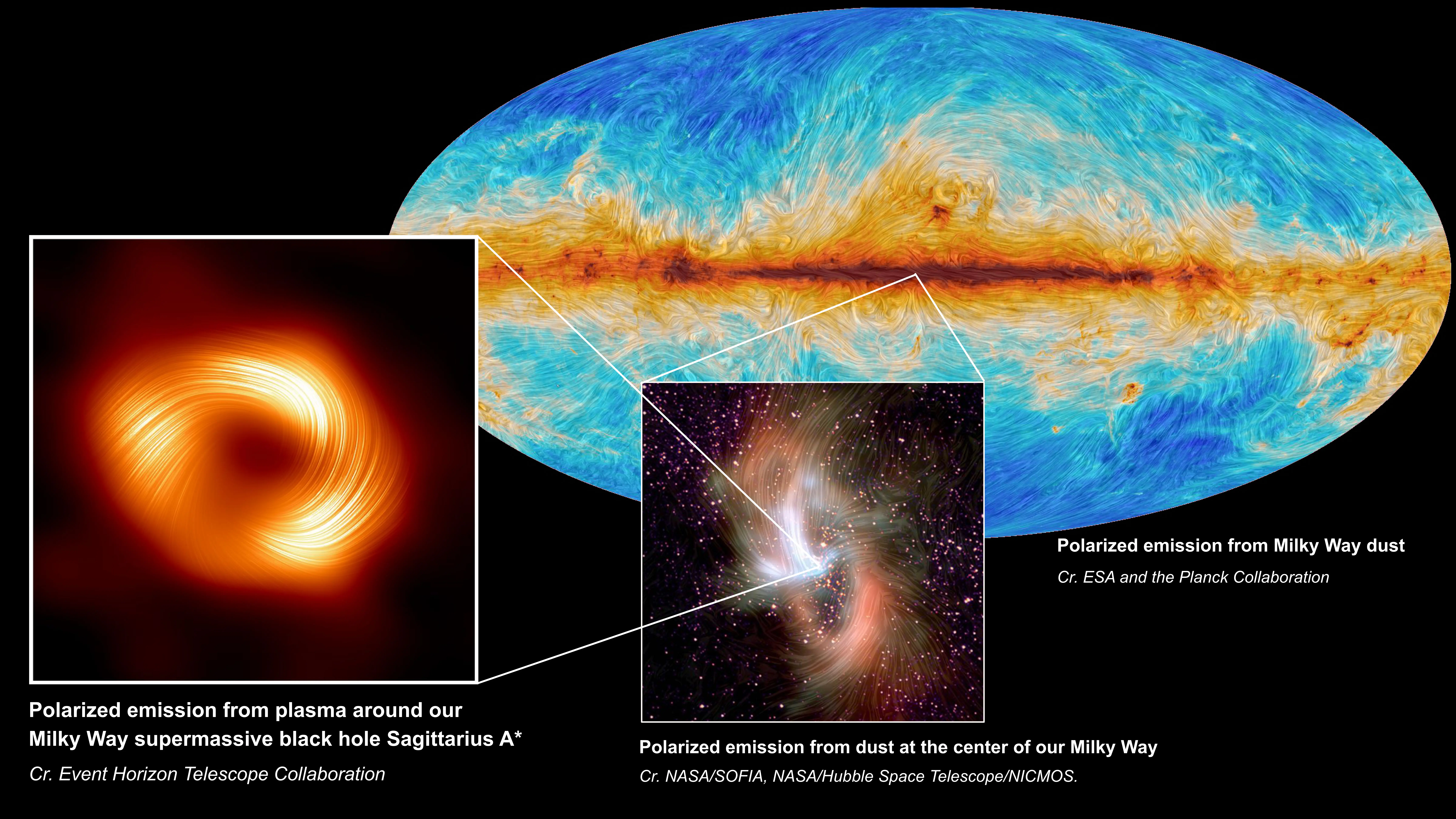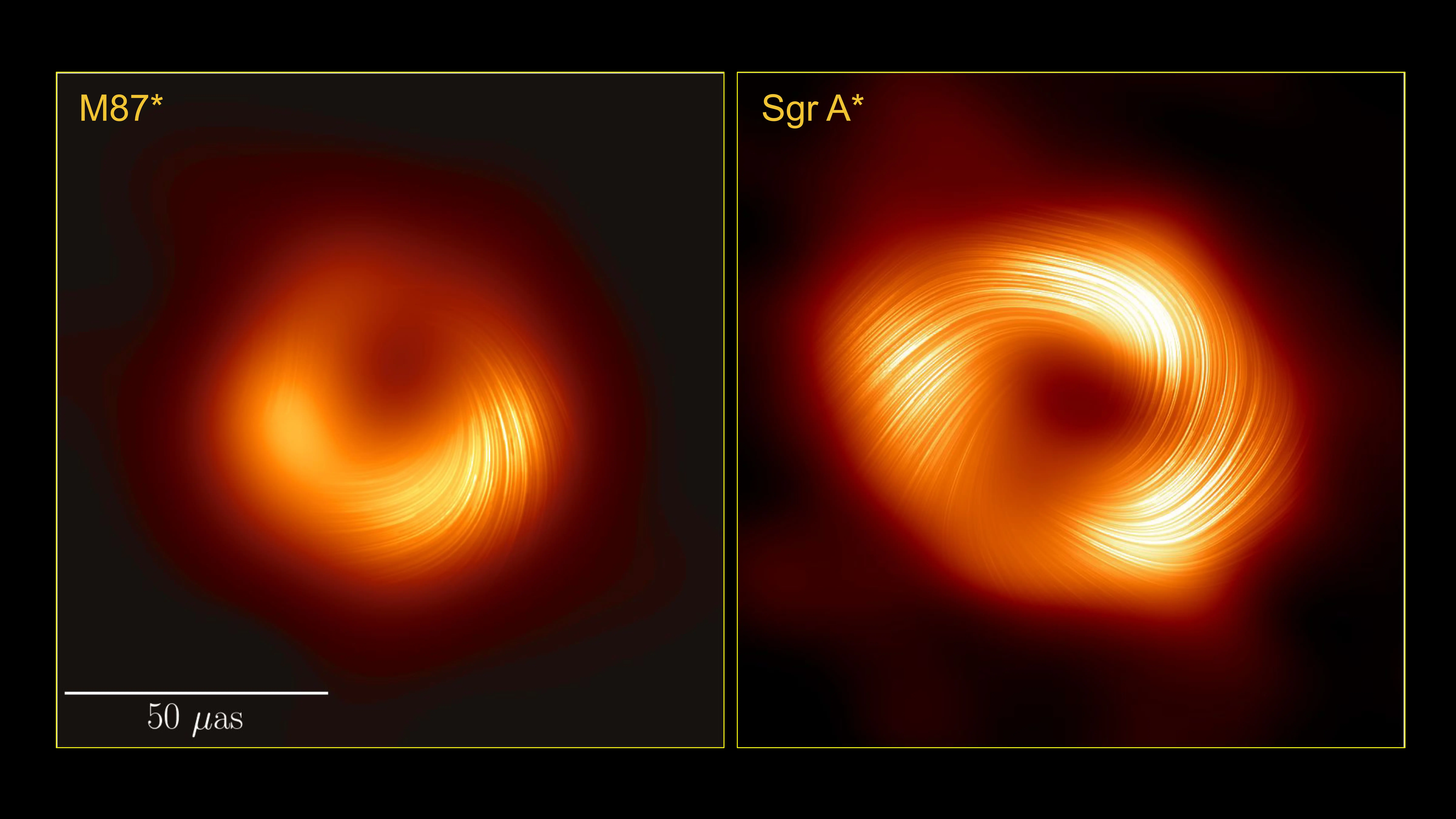The recent revelations from the Event Horizon Telescope (EHT) collaboration, which includes contributions from scientists at the Center for Astrophysics | Harvard & Smithsonian (CfA), present an unprecedented glimpse into the complex dynamics surrounding the supermassive black hole Sagittarius A* (Sgr A*) at the center of our Milky Way Galaxy. Through the innovative use of polarized light imaging, researchers have discovered organized and strong magnetic fields spiraling from the edge of Sgr A*, mirroring the magnetic field structure observed around the black hole in the M87 galaxy. This striking similarity suggests that such magnetic fields might be a universal feature of black holes, possibly playing a crucial role in their interaction with surrounding gas and matter.
This comparison between Sgr A* and M87 is particularly intriguing given the substantial differences in size and mass between the two black holes; Sgr A* is significantly smaller and less massive than M87’s black hole. Yet, the similarities in their magnetic field structures indicate underlying commonalities in their nature and behavior. The use of polarized light to study these celestial giants allows astronomers to map the magnetic fields surrounding them, offering insights into the processes of matter accretion and ejection.
The EHT’s achievements in imaging Sgr A* in polarized light, despite its rapidly changing nature, underscore the complexity and dynamism of black holes. This endeavor required overcoming significant challenges due to the turbulent magnetic fields and the black hole’s dynamism. The success in creating a polarized image of Sgr A* adds a new dimension to our understanding of black holes, revealing more about their astrophysics, gas properties, and the mechanisms at play as they feed.
 the supermassive black hole at the center of the Milky Way Galaxy, Sagittarius A*, is seen in polarized light, the visible lines indicating the orientation of polarization, which is related to the magnetic field around the shadow of the black hole. At the center, the polarized emission from the center of the Milky Way, as captured by SOFIA. At the back right, the Planck Collaboration mapped polarized emission from dust across the Milky Way. Credit: S. Issaoun, EHT Collaboration
the supermassive black hole at the center of the Milky Way Galaxy, Sagittarius A*, is seen in polarized light, the visible lines indicating the orientation of polarization, which is related to the magnetic field around the shadow of the black hole. At the center, the polarized emission from the center of the Milky Way, as captured by SOFIA. At the back right, the Planck Collaboration mapped polarized emission from dust across the Milky Way. Credit: S. Issaoun, EHT Collaboration
Looking ahead, the EHT’s scheduled observations of Sgr A* in April 2024, along with the planned expansions and upgrades such as the next-generation EHT (ngEHT) project and the Black Hole Explorer (BHEX) mission, promise even more detailed insights. These advancements aim to produce high-fidelity movies of supermassive black holes, capture the intricacies of their event horizons, and potentially uncover hidden jets. By extending the EHT into space, astronomers hope to achieve the sharpest black hole images yet, enabling the study of the photon ring and further elucidating the relationship between black holes and their host galaxies.
 Seen in polarized light, this side-by-side image of the supermassive black holes M87* and Sagittarius A* indicates to scientists that these beasts have similar magnetic field structures. This is significant because it suggests that the physical processes that govern how a black hole feeds and launches a jet may be universal features amongst supermassive black holes. (Credit ETH Collaboration)
Seen in polarized light, this side-by-side image of the supermassive black holes M87* and Sagittarius A* indicates to scientists that these beasts have similar magnetic field structures. This is significant because it suggests that the physical processes that govern how a black hole feeds and launches a jet may be universal features amongst supermassive black holes. (Credit ETH Collaboration)
This groundbreaking work not only enhances our understanding of black holes but also pushes the boundaries of astronomical imaging and observation, paving the way for discoveries in the enigmatic realm of these cosmic phenomena.
This research was presented in two papers by the EHT collaboration published in The Astrophysical Journal Letters: “First Sagittarius A* Event Horizon Telescope Results. VII. Polarization of the Ring” and “First Sagittarius A* Event Horizon Telescope Results. VIII. Physical Interpretation of the Polarized Ring“.













Responses (0 )